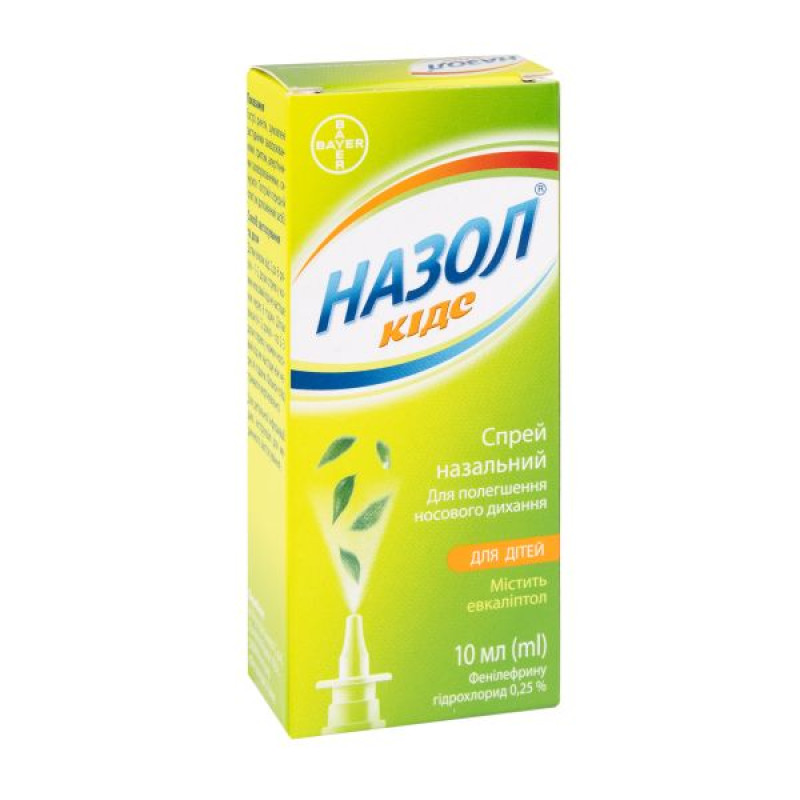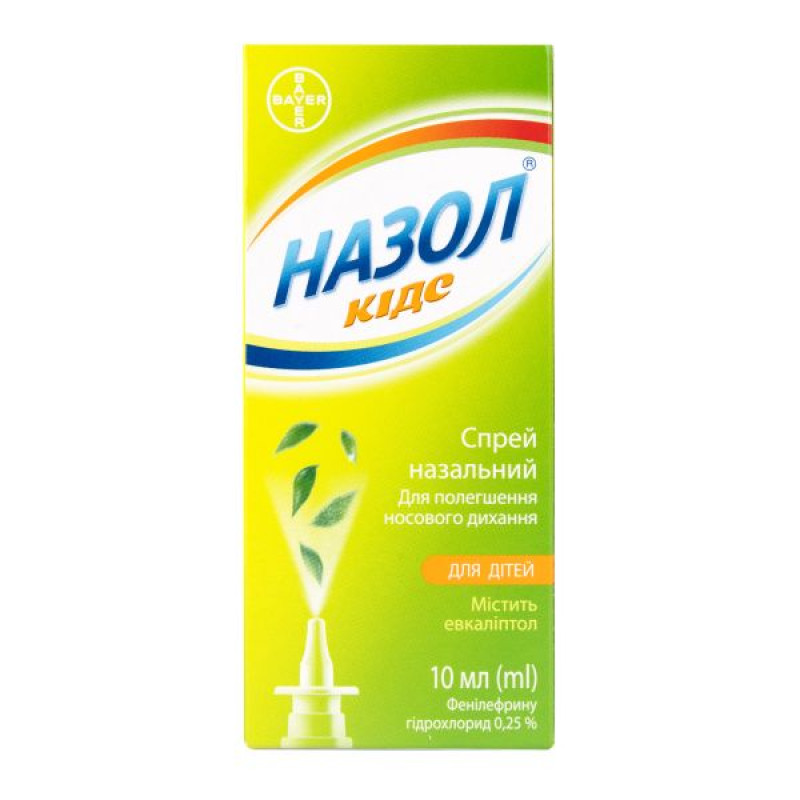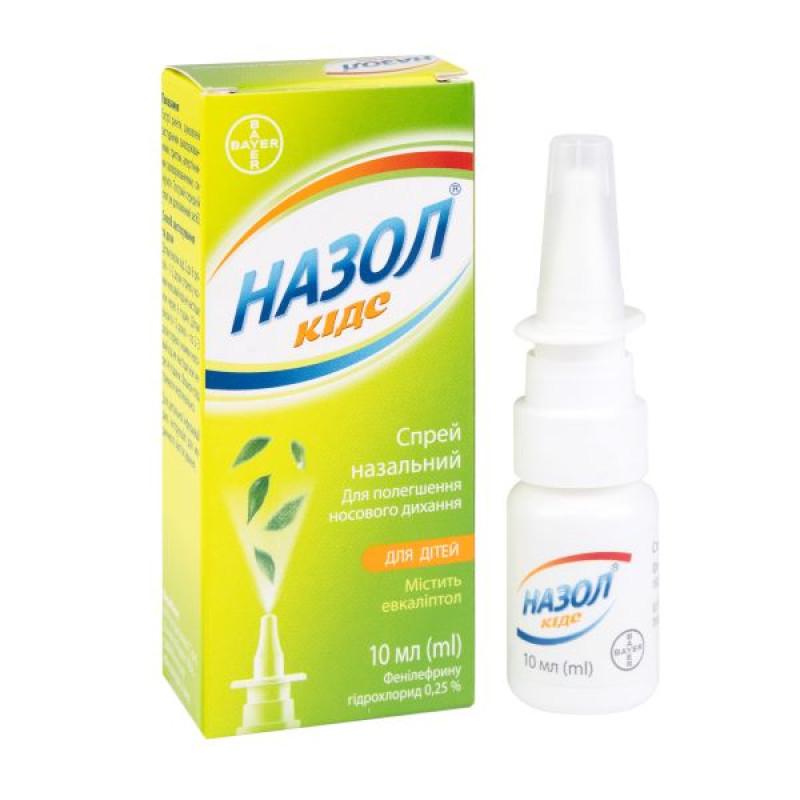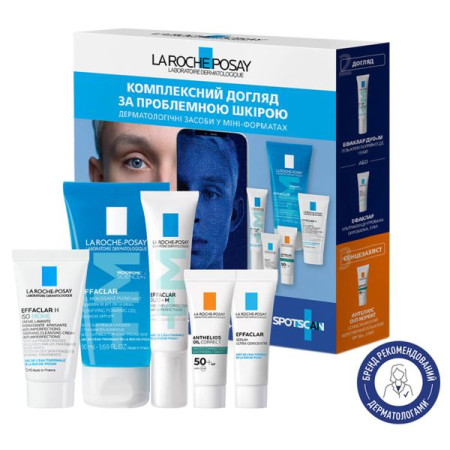Nazol Kids nasal spray 0.25% bottle with sprayer 10 ml

Instructions for use Nazol Kids nasal spray 0.25% bottle with sprayer 10 ml
Composition
active ingredient: phenylephrine hydrochloride;
1 ml of the drug contains 2.5 mg of phenylephrine hydrochloride (0.25%);
Excipients: eucalyptol, glycerin, benzalkonium chloride, macrogol 1500, sodium hydrogen phosphate dihydrate, potassium dihydrogen phosphate, disodium edetate dihydrate, purified water.
Dosage form
Nasal spray.
Main physicochemical properties: transparent, colorless or light yellow liquid with a eucalyptus odor.
Pharmacotherapeutic group
Anti-edematous and other nasal preparations for topical use. Sympathomimetics, simple preparations. ATX code R01A A04.
Pharmacological properties
Pharmacodynamics
Phenylephrine hydrochloride is a synthetic adrenomimetic. Stimulating α-adrenoreceptors of blood vessels, it contributes to a pronounced vasoconstrictor effect. The vasoconstrictor effect is manifested by a decrease in blood flow and swelling of the mucous membranes of the nose, paranasal sinuses and Eustachian tube. Thus, nasal breathing, which was disturbed during influenza, colds and allergic diseases, is restored.
Pharmacokinetics
Local vasoconstriction of the nasal mucosa and paranasal sinuses occurs 3–5 minutes after administration of the drug into the nasal cavity. The anti-edematous effect lasts up to 6 hours.
Indication
Acute rhinitis caused by colds, flu, allergic diseases, sinusitis. Acute otitis media (as an adjuvant).
Contraindication
Increased individual sensitivity to the components of the drug (allergic reactions), severe forms of arterial hypertension, tachysystolic heart rhythm disorders, acute cardiovascular diseases, decompensated heart failure, cardiac conduction disorders, renal failure, thyrotoxicosis, acute pancreatitis, hepatitis, inflammation of the skin and mucous membrane of the anterior nasal cavity and a tendency to the formation of nasal crusts (atrophic rhinitis), conditions after transsphenoidal hypophysectomy; simultaneous use with monoamine oxidase inhibitors and within 15 days after discontinuation of treatment with MAO inhibitors.
Interaction with other medicinal products and other types of interactions
It should not be used together with other vasoconstrictors (by any route of administration), as well as with antihypertensive drugs (ß-blockers).
Atropine sulfate blocks the reflex bradycardia caused by phenylephrine and increases the vasopressor response to phenylephrine. Concomitant use of phenylephrine with ß-blockers may lead to arterial hypertension and excessive bradycardia with possible heart block. It should be used with caution with thyroid hormones, drugs that affect cardiac conduction (cardiac glycosides, antiarrhythmic drugs). When used simultaneously with drugs that cause potassium excretion, for example, with some diuretics such as furosemide, hypokalemia and decreased arterial sensitivity to vasopressor drugs such as phenylephrine may be increased.
Concomitant administration of phenylephrine and other sympathomimetics may result in excessive central nervous system stimulation, with nervousness, irritability, and insomnia. Convulsions may also occur. In addition, concomitant administration of other sympathomimetics with phenylephrine may potentiate the vasoconstrictor or cardiovascular effects of either drug.
Concomitant use with MAO inhibitors is contraindicated. This drug should be started at least 15 days after discontinuation of MAO inhibitor therapy, as pressor effects may be enhanced (see section "Contraindications").
Concomitant use of phenylephrine with linezolid is not recommended.
Application features
To avoid spreading infection, individual use of the sprayer is recommended.
Persistent swelling of the nasal passages after 3 days of use may indicate the presence of a deviated nasal septum, purulent sinusitis, adenoids, allergic rhinitis, persistent bacterial infection, or other diseases that require consultation with a specialist and specialized comprehensive therapy.
This medicine should be used with caution in patients with arterial hypertension, cardiovascular diseases, thyroid diseases (except those listed in the "Contraindications" section), angle-closure glaucoma, diabetes mellitus. In these cases, you should consult a doctor before starting to use the drug.
The medicine should be used under adult supervision.
If children under 12 years of age experience nervousness, dizziness, or insomnia, they should stop using the drug and consult a doctor.
Ability to influence reaction speed when driving vehicles or other mechanisms
This medicine is not expected to affect the reaction speed when driving or using other mechanisms.
Use during pregnancy or breastfeeding
The drug is not intended for use during pregnancy or breastfeeding.
Method of administration and doses
Children aged 2 to 6 years - 1-2 sprays in each nasal passage no more often than every 6 hours. Children aged 6-12 years - 2-3 sprays in each nasal passage no more often than every 4 hours. The bottle should be held vertically.
The duration of the treatment course usually does not exceed 3 days.
Children
Use in children aged 2 to 12 years under adult supervision.
Overdose
Although topical application usually does not cause systemic adverse reactions, overdose may increase the manifestations of adverse reactions, especially with prolonged use. Cardiac arrhythmias, increased blood pressure, hypotension, pain and discomfort in the heart area, palpitations, shortness of breath, non-cardiogenic pulmonary edema, agitation, convulsions, headache, tremor, sleep disturbances, anxiety, nervousness, irritability, inappropriate behavior, psychosis with hallucinations, insomnia, weakness, anorexia, nausea, vomiting, oliguria, urinary retention, painful or difficult urination, facial flushing, feeling of coldness in the extremities, paresthesia, pale skin, piloerection, increased sweating, hyperglycemia, hypokalemia, narrowing of peripheral vessels and vessels of internal organs, reduced blood flow to vital organs, which can lead to deterioration of blood supply to the kidneys, metabolic acidosis, increased load on the heart due to increased total peripheral vascular resistance. Severe vasoconstriction effects are more likely in patients with hypovolemia and severe bradycardia. There is no specific antidote for phenylephrine poisoning. Treatment is symptomatic.
Adverse reactions
In rare cases, the following side effects are possible.
At the site of application: irritation at the site of application, sneezing, burning sensation, tingling in the nose.
From the cardiovascular system: feeling of blood rushing to the face, heart rhythm disturbances, bradycardia, increased blood pressure.
From the nervous system: dizziness, feeling of fear, headache.
On the part of the immune system: allergic reactions, including cross-reactions with allergies to other sympathomimetics, which may manifest as rashes, itching, urticaria, angioedema (hands, face or throat), feeling of heaviness behind the sternum, difficulty breathing.
When using the drug in doses higher than recommended, the manifestations listed in the "Overdose" section are possible.
Expiration date
2 years. After opening the bottle, the shelf life is 12 months.
Storage conditions
Store in original packaging at a temperature not exceeding 25 ° C. Keep out of the reach of children.
Packaging
10 ml plastic bottle with sprayer in a cardboard box.
Vacation category
Without a prescription.
Producer
Istituto De Angeli S.r.l.
Location of the manufacturer and its business address
Localita Prulli 103/c - 50066 Reggello (Florence), Italy.
There are no reviews for this product.
There are no reviews for this product, be the first to leave your review.
No questions about this product, be the first and ask your question.










